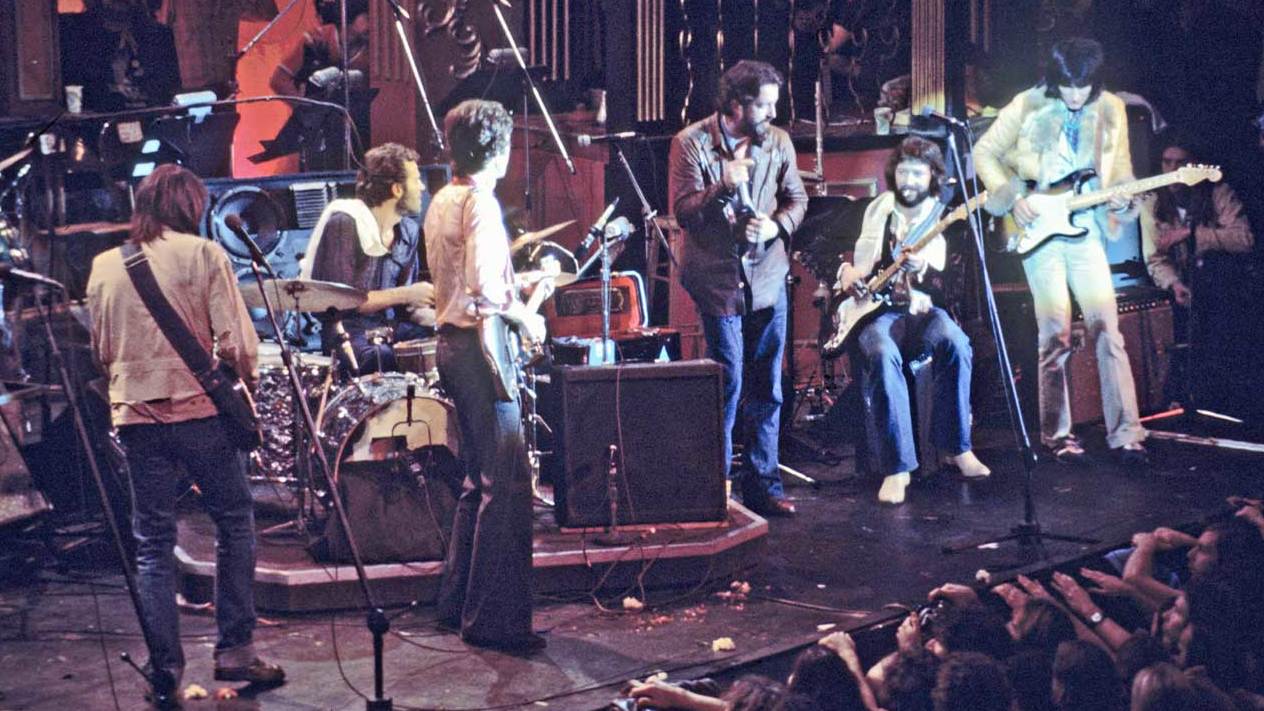As an epilogue to Eight Days A Week, director Ron Howard’s affectionate portrait of The Beatles’ touring years, the band’s famed performance at New York’s Shea Stadium is shown in full. It’s a thrilling visual experience, given that live shows on DVD and watched on television are ten-a-penny today. Here we present a chronological trawl through other rock spectaculars that were given a cinema release, and are best viewed on a screen the size of a house…
Monterey Pop (1968)
Less iconic than Woodstock two years later, and a lot less messy, Monterey was pivotal in establishing The Who and Jimi Hendrix as major forces in America, as well as introducing white mainstream audiences to Otis Redding. DA Pennebaker’s original 79-minute cut featured just one song from each act, but a 2002 DVD edition boasts the full sets of everyone on the bill.
Elvis: That’s The Way It Is (1970)
Energised by the reception to his 1968 comeback TV special, The King made one last movie as an actor (Change Of Habit) and was next seen on the big screen ripping it up at the International Hotel in Las Vegas. Sin City would be his home from home until his death in 1977, and here he’s in superb form before “the Vegas years” became shorthand for his decline.
Born To Boogie (1972)
The bright lights and snazzy camera effects of Top Of The Pops helped establish what the tabloids labelled “T.Rextasy”, but as Ringo Starr’s film shows, Marc Bolan rocked out on a more modest set-up on the concert stage. Shorn of Tony Visconti’s anthemic production, the songs are delivered in a back-to-basics style that illustrates the band’s debt to early rock‘n’roll.
Let The Good Times Roll (1973)
Speaking of rock‘n’roll, the big names of days gone by gathered to turn back the years in an inventive movie, using split-screens to contrast the stars in their ‘50s heyday and in present times. The backstage interviews are a hoot (Little Richard calling Jerry Lee Lewis “the king of stupidity”), while the most electrifying moments out front come courtesy of Chuck Berry and Bo Diddley.
The Song Remains The Same (1976)
Filmed in 1973 at the height of Led Zeppelin’s rock dominance, the concert footage was assembled from three shows at Madison Square Garden, one of the first movies to feature a 24-track quadraphonic sound system. An unstoppable juggernaut onstage, but the interspersed fantasy sequences look corny and dated now (Robert Plant rescuing a damsel in distress!), although manager Peter Grant clearly relishes playing a gangster.
- The 21 best rockumentaries to stream on Netflix and Prime
- More Than One Kind Of Monster: 16 Great Rock Films
- Need something to watch? Here's 10 of the Best Rock Biopics ever made
- 20 of the worst music biopics ever made
The Last Waltz (1978)
For their farewell show at San Francisco’s Winterland Ballroom, The Band introduced an astonishing parade of guest performers, all caught by Martin Scorsese’s cameras. Bob Dylan, Eric Clapton and Van Morrison in particular step up to the plate with vigour, although drummer Levon Helm was later critical of the film, claiming Scorsese made the rest of the group look like Robbie Robertson’s sidemen.
Ziggy Stardust And The Spiders From Mars (1979)
DA Pennebaker’s film of David Bowie’s “last show” at the Hammersmith Odeon in 1973 wasn’t released until six years later, arguably adding to the Ziggy myth. Rarely has a rock star being captured at the height of his powers with such grandeur, although the camera work is fairly primitive by today’s standards. The excited audience shots emphasise just how iconic the Ziggy persona had become.
Stop Making Sense (1984)
Building humbly from David Byrne armed with just an acoustic guitar and a beat box, Jonathan Demme’s brilliantly choreographed film both celebrates and deconstructs the concert experience. Talking Heads move from angular art rock to the funk leviathan that made the Speaking In Tongues album over the space of an hour-and-a-half, and who can forget Byrne’s comical fat suit?
Shine A Light (2008)
Away from their usual hunting ground of sports stadia and enormodomes, it’s a more reserved Rolling Stones who set up shop in New York’s Beacon Theatre for Martin Scorsese’s film. Close-up onstage cameras add to the intimacy, and there are rollicking guest spots from Buddy Guy and Jack White. Mick Jagger later joked it was the first Scorsese movie not to feature Gimme Shelter on the soundtrack.
Under Great White Northern Lights (2009)
The White Stripes set out across Canada on their 10th anniversary, playing remote outposts such as the Yukon, Nunavut and Nova Scotia. As well as more typical concert halls, the duo busk in a variety of locales, including a bowling alley, a boat and a bus. “Moments like that felt more real than anything we’d done before,” claimed Jack White.
